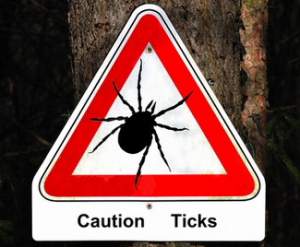Choosing and Using Insect Repellents
By Chris Williams on February 3, 2013.
It’s important to use insect repellents not just to avoid the annoyance and irritation of biting pests, but also to reduce the risk of diseases that are spread by biting pests, like Lyme disease and West Nile virus. Insect repellents can protect you and your family while you work and play outdoors.
Used to be that insecticides containing DEET (N, N-diethyl-m-toluamide) were the only products recommended by the Centers for Disease Control. A few years ago, CDC endorsed two new insect repellents, picaridin and the biopesticide oil of lemon eucalyptus. Most experts still say that a repellent containing DEET is your best choice if you are looking for long-term protection. One study found that DEET provided “complete protection for the longest duration” when compared with 12 non-DEET repellents.

“DEET is effective against a wide range of biting pests, it’s not as effective against ticks-“
While DEET is effective against a wide range of biting pests, it’s not as effective against ticks as the pyrethroid pesticide, permethrin. Permethrin actually kills ticks that come in contact with it. Repellents containing permethrin are for use on clothing only, not on skin. Certain clothing manufacturers sell clothes that are impregnated with permethrin that remains effective through 25 washings. When you need protection from ticks, CDC recommends that you use a repellent with 20-50% DEET on your skin along with a permethrin repellent on your clothes.
Picaridin repellents are considered to be as safe and effective as DEET products at similar concentrations, they don’t have an odor like DEET, and they don’t damage fabrics or surfaces as DEET can. Oil of lemon eucalyptus is a plant-based ingredient that is not as effective as DEET or picaridin but protects as well at low concentrations as DEET. Other biopesticide repellents registered by the Environmental Protection Agency include p-Mentane-3,8-diol, Methyl nonyl ketone, IR 3535, and oil of citronella.
When shopping for an insect repellent, check the can for the percentage of chemical in the product. For DEET, it can range from 4% to 100%. The American Academy of Pediatrics has recommended that repellents containing up to 30% DEET can be used on children over 2 months of age. If you only need 1-2 hours of protection you can use a repellent with just 10% DEET or 10% picaridin. For longer periods of protection, choose repellents with higher percentages of active ingredient. If you need protection for 5-8 hours, 20 to 50% DEET is recommended. Most repellents have the protection time listed on the label.
Proper Use of Insect Repellents
- Use just enough repellent to cover skin or clothing. Saturation gives no extra benefit.
- Apply creams and lotions 15-20 minutes before going outdoors.
- Avoid using repellents over cuts, wounds, or irritated skin.
- Don’t apply repellents near eyes, mouth, or food.
- Avoid breathing the spray.
- After returning indoors, wash treated skin with soap and water—especially important when repellents are used repeatedly. Bathing also provides an opportunity to check for ticks.
- If you have a reaction to an insect repellent, wash the area. If symptoms persist, see your physician. Take the repellent with you.